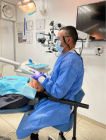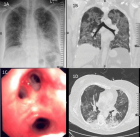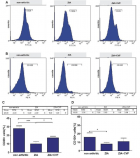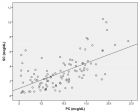Table of Contents
Joint Functional Screening for Older Adults: Clinical Prevention of Accidental Fall
Published on: 27th September, 2017
OCLC Number/Unique Identifier: 7286353711
As people get older, chronic diseases become an important reason of disability while a decline in physical functions is related to aging among the elders, which may lead to dependency and isolation of the older adults. Body asymmetry and imbalance body alignment can bring added stress to the joint structures that can cause dysfunction of the joint, ligaments, tendons, bursas, and related muscles, which in return brings about problem while walking or during activities of daily living. Joint Functional Screening (JFS) is a systemic clinical examination with clinical reasoning of the entire human joints body, with or without causative limitation to derive a holistic analysis of musculoskeletal system. JFS profile helps to assess body disorder of older people. This clinical screening include documentation of balance of the body, lower and upper body strength, joints flexibility, body composition, and body alignment. This is an innovation build to profile a normal musculoskeletal state to decode any anomaly in an otherwise a normal subject, who might be preparing to take up any activities in one’s lifespan that could elicit an injury which could be prevented. JFS could be a useful tool for physiotherapists, exercise therapist or even the personal trainers to screen a body prior to rehabilitative or an exercise program; and this clinical screening is presently a best guidance to prevent risk of fall or injury among individual healthy people and older adult.
The role of UK national ligament registry as additional source of evidence for anterior cruciate ligament reconstruction: Review of the literature and future Perspectives
Published on: 20th August, 2017
OCLC Number/Unique Identifier: 7286426391
Background: There is paucity in studies reporting long-term results following anterior cruciate ligament (ACL) rupture. A UK national ligament registry (NLR) designed to collect demographic, clinical and outcome data on patients undergoing ACL reconstruction was launched in 2013. There was therefore an emergent question on the role of such registry as an additional source of evidence.
Study aims: A framework analysis aimed to provide a basis for the evaluation of outcomes following ACL management and formulate a structure of the evidence, which can be derived from the registry.
Methods: A systematic approach was adopted to select relevant studies. Qualitative thematic and meta-narrative analyses were conducted. Level-1 registry data were recorded for all primary ACL reconstruction procedures from January to June 2016. Registry data content and validity were evaluated.
Results: Seven studies were suitable for analyses yet none defined the pattern of meniscal injury following initial treatment. When reported the incidence varied markedly between 23% and 80%. There was evidence of collection of at least one principal outcome measure in at least 85% of participants across all studies. Thematic analysis identified four key domains of outcome measures (1) intervention selection, (2) Knee stability evaluation, (3) Patient reported outcomes, (4) Radiographic evaluation and risk of secondary osteoarthritis. Graft choice, rate of meniscal and chondral injuries and cumulative risk of revision surgery had incomplete and inconsistent reports. Comparison of demographic and clinical data with the first registry report demonstrated: predominately younger patient population; older female patients at time of intervention; and higher incidence of meniscal tears.
Conclusions: Registry data driven quality and research improvement open a new paradigm in ACL reconstruction evidence base and future practice. Early observations have consolidated the importance of associated meniscal injuries in the management of ACL rupture. Further work is needed to improve registry data completeness, accuracy and validity. A proposed data migration process using available technologies can help harmonise data collection without the added burden on clinical services.
Characterisation of Delayed Onset of Muscle Soreness (DOMS) in the hand, wrist and forearm using a finger dynamometer: A pilot study
Published on: 14th July, 2017
OCLC Number/Unique Identifier: 7286354494
Background: Experimentally-induced delayed-onset muscle soreness of large muscle groups is frequently used in as an injurious model of muscle pain. We wanted to develop an experimental model of DOMS to to mimic overuse injuries from sports where repeated finger flexion activity is vital such as rock climbing. The aim of this pilot study was to evaluate the utility of a ‘finger trigger device’ to induce DOMS in the fingers, hands, wrists and lower arms.
Methods: A convenient sample of six participants completed an experiment in which they undertook finger exercises to exhaustion after which measurements of pain, skin sensitivity to fine touch, forearm circumference and grip strength in the hand, wrist and forearm were taken from the experimental and contralateral non-exercised (control) arms.
Results: Pain intensity was greater in the experimental arm at rest and on movement when compared with the control arm up to 24 hours after exercise, although the location of pain varied between participants. Pressure pain threshold was significantly lower in the experimental arm compared with the control arm immediately after exercises locations close to the medial epicondyle but not at other locations. There were no statistical significant differences between affected and non-affected limbs for mechanical detection threshold, forearm circumference or grip strength.
Conclusion: Repetitive finger flexion exercises of the index finger by pulling a trigger against a resistance can induced DOMS. We are currently undertaking a more detailed characterization of sensory and motor changes following repetitive finger flexion activity using a larger sample.

HSPI: We're glad you're here. Please click "create a new Query" if you are a new visitor to our website and need further information from us.
If you are already a member of our network and need to keep track of any developments regarding a question you have already submitted, click "take me to my Query."

























































































































































